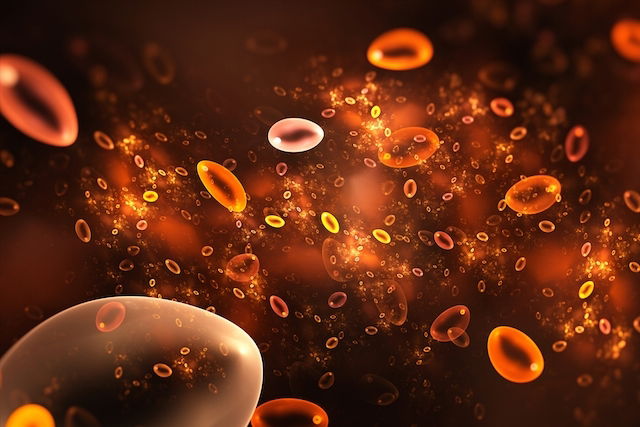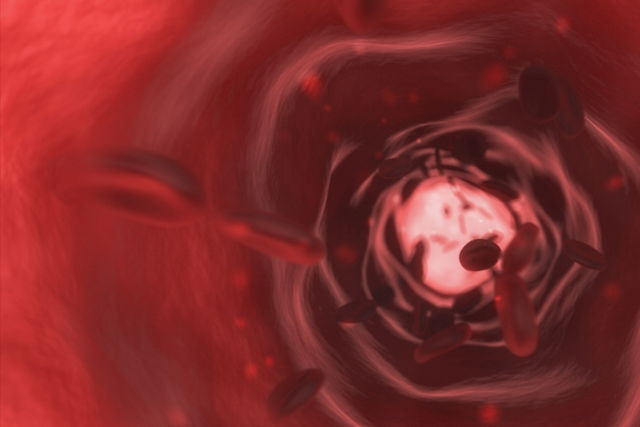Thrombocytopenia is characterized by a low platelet count. Adequate platelets are essential for coagulation, and therefore low platelets can lead to symptoms like bruising or red spots on the skin, bleeding gums, nose bleeds or red urine.
Platelets help to clot the blot to prevent hemorrhaging and help with wound healing. There are many causes for platelet counts to drop. like infections (like dengue), medications (like heparin), immune diseases (like immune thrombocytopenic purpura) and even cancer.
Treatment for low platelets will depend on the underlying cause, and should be guided by a family doctor or hematologist. It may include the use of medications, or in more serious cases, a platelet transfusion.

Main symptoms
Low platelets are defined as a blood platelet count that is less than 150,000 platelets per microliter of blood. Minor dips will not usually cause symptoms however, larger decreases can cause more bleeding in patients as well as:
- Purple bruises or red spots on the skin
- Bleeding gums
- Nose bleeds
- Bloody urine
- Bloody stools
- Heavy periods
- Wounds with bleeding that is difficult to control
These symptoms can occur in any person with low platelets, but are more common in people with counts less than 50,000 platelets per microliter of blood. Symptoms are also more common in people who present with other illnesses that impact coagulation, like cirrhosis or dengue.
What causes low platelets
Platelets are produced in the bone marrow and have a lifespan of about 10 days, which requires them to constantly be replenished. Factors that can affect platelet counts are:
1. Platelet destruction
There are some situations that can kill off platelets sooner than their 10-day lifespan, which can decrease their overall counts. Some of the most common causes of destruction are:
- Viral infections, like zika, mononucleosis and HIV, as well as bacterial infections.
- Medications, like heparin, sulfa, anti-inflammatories, anti-convulsants and antihypertensives, which can cause reactions that destroy platelets.
- Auto-immune disease, in which the body attacks its own platelets, like lupus, immune thrombocytopenic purpura, hemolytic uremic syndrome, and hypothyroidism.
Immune diseases tend to cause more serious and persistent platelet reductions than medications or infections. In addition, each person may have a different reaction, depending on their immunity status.
2. Folic acid or vitamin B12 deficiency
Substances like folic acid and vitamin B12 are essential for hematopoesis, which is the formation of blood cells. A deficiency in folic acid or B12 can lead to decreased red blood cells, white blood cells and platelets. These deficiencies are common in vegans with poor nutritional intake, malnourished people, alcoholics and people with occult bleeding.
Read more about B12 deficiency, how it presents and how it is treated.

3. Bone marrow changes
Some changes in function of the bone marrow can lead to decreased production of platelets. This can happen in many situations, like:
- Bone marrow disease, like aplastic anemia and myelodysplasia, which result in decreased production or malformation of blood cells.
- Bone marrow infections, like HIV, Epstein-Barr virus and chicken pox.
- Cancers that affects the bone marrow, like leukemia, lymphoma or metastases.
- Chemotherapy, radiation or exposure to substances that are toxic to the bone marrow, like lead or aluminum.
It is common to also present with anemia and decreased white blood cells, as the bone marrow is responsible for the production of several types of blood cells.
4. Problems with spleen function
The spleen is responsible for eliminating different types of blood cells that have aged, like the platelets. If the spleen becomes enlarged, which can happen with cirrhosis, sarcoidosis and amyloidosis, the spleen may eliminate platelets at a higher rate than usual, resulting in lower counts. See what else can cause an enlarged spleen and how it is typically treated.
5. Other causes
When low platelets occur without an apparent cause, it is important to consider other factors, like lab errors. False platelet results can occur if platelets aggregate, or stick together, in the test tube, which can happen due to the presence of a reagent in the tube. Therefore, the doctor may consider repeating the lab test to confirm a low count.
Alcoholism can also cause a decrease in platelets, as alcohol is toxic to blood cells and affects production in the bone marrow. Low platelets may also occur in pregnancy, and it is referred to physiologic thrombocytopenia. This occurs due to a dilution in the blood due to fluid retention. Drops are usually mild and resolve spontaneously following labor and delivery.
In addition, there have been cases of low platelets associated with COVID-19 infection and/or vaccination. Drops in platelets have been observed following AstraZeneca Johnson & Johnson COVID vaccines, and these cases have also led to thrombosis. However, these side-effects are rare.
What to do if you have low platelets
If thrombocytopenia has been confirmed in your labs tests, you should reduce your risk for bleeding by avoiding strenuous activity, contact sports and using medications that may affect platelet function (like aspirin, anti-inflammatories, anti-coagulants and ginkgo-biloba for example). You should also avoid any alcohol intake.
You should especially be careful if your platelets are below 50,000 / microliter of blood. Counts less than 20,000 / microliter of blood may require hospital admission for observation.
Your diet should be balanced and rich in grains, fruit, vegetables and lean meats to promote the formation of blood cells and overall recovery.
A platelet transfusion is not always necessary, as appropriate interventions can help the patient recover adequately. However, the doctor may advise a transfusion if the patient is actively hemorrhaging, if imminent surgery will be necessary, if counts are under 10.000 platelets per microliter of blood, or if counts are low and the patient is presenting with fever or requires chemotherapy.
How it is treated
After determining why the platelets have dropped, treatment should be initiated as guided by a doctor. It can include:
- Treatment or elimination of the underlying cause, like alternating medications, treating a disease or infection, or reducing alcohol intake
- Use of corticosteroids or immunosuppressants to treat and auto-immune disease
- Surgical removal of the spleen, or a splenectomy, when platelets are severely decreased due to overactive spleen functioning
- Blood filtration, which is a type of dialysis which is used when antibodies and other blood components are affecting immune function and blood circulation. This can occur with thrombocytopenia or hemolytic uremic syndrome.
Treatment for low platelets caused by cancer will vary depending on the cancer stage and the treatments being used for the cancer.
